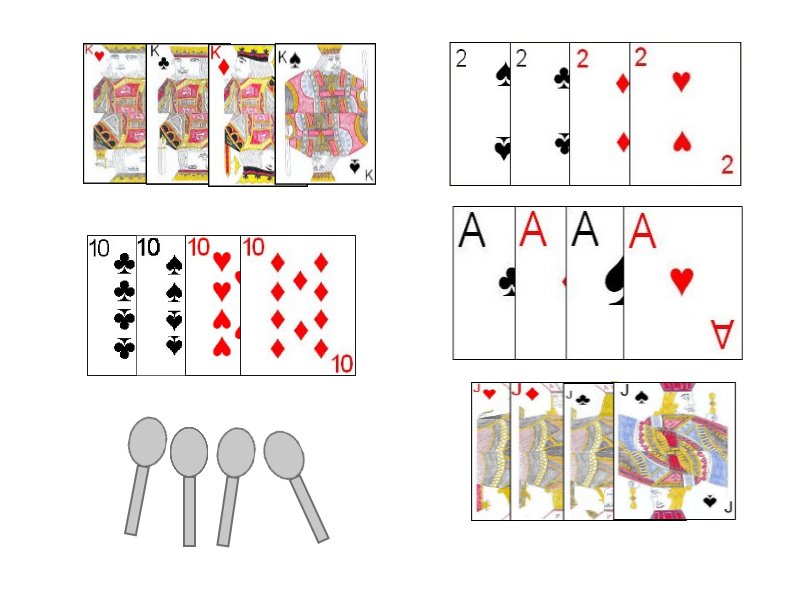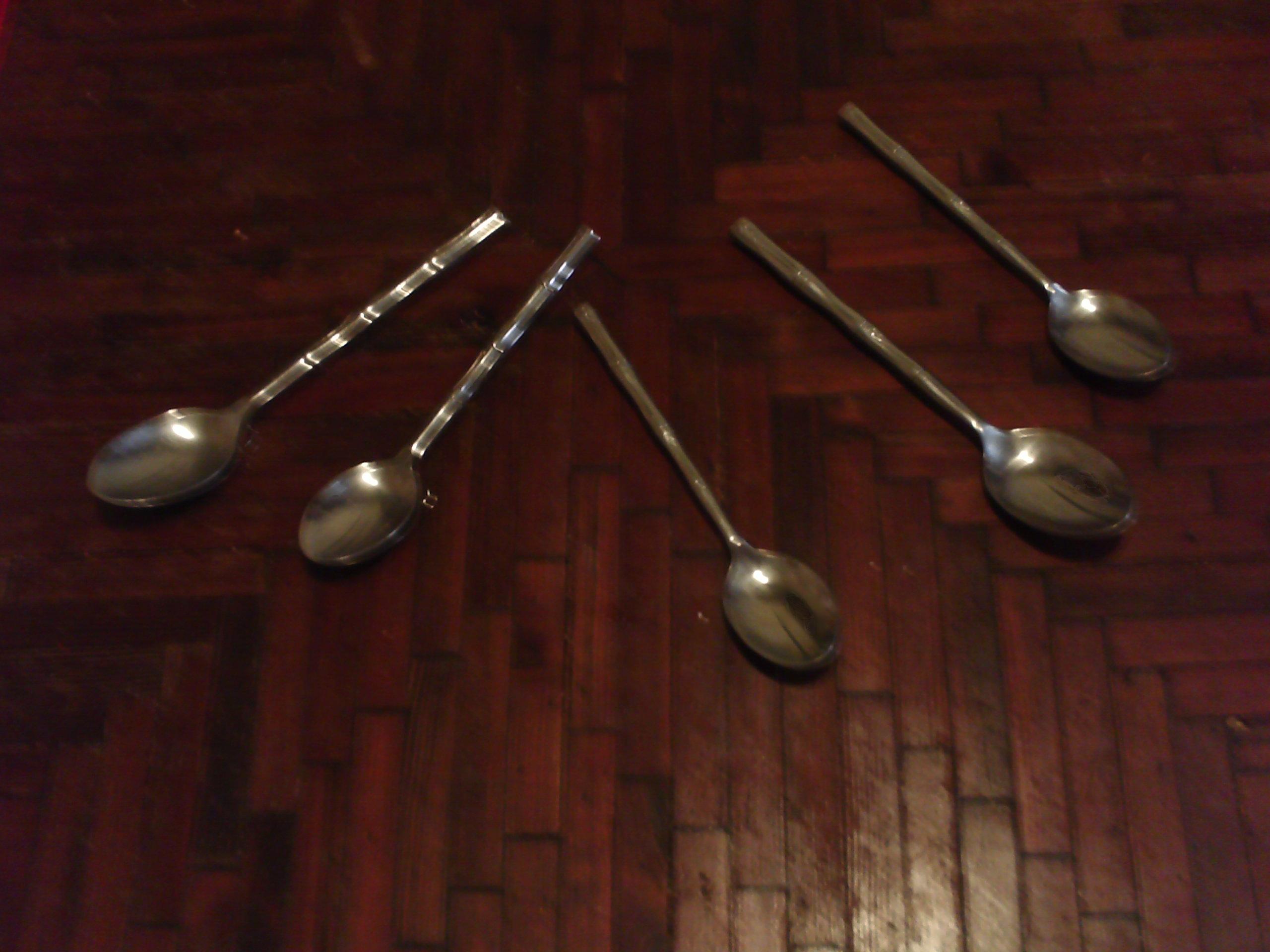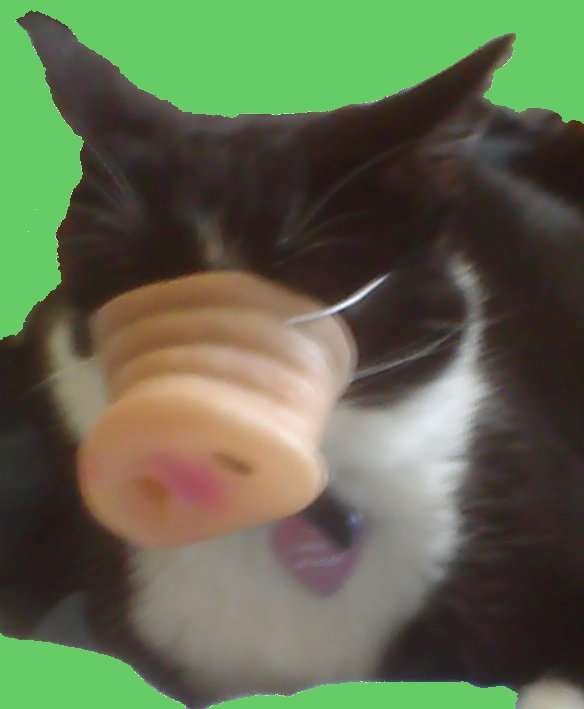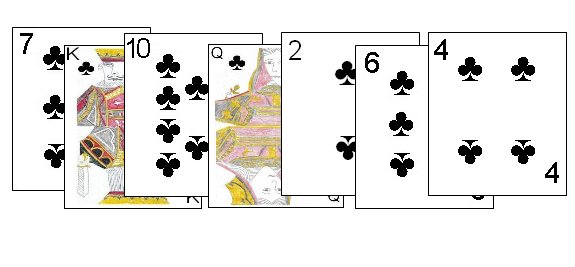
 Spoons is a very fast paced, hilarious card game for 3 to 13 players.
Equipment necessary to play this game are a separate set of four equal ranked cards (such as four Jacks) for each active player as well as a collection of spoons. The spoons should all be placed in the center of the playing surface with one fewer spoon than the number of players in the hand.
The spoons should be placed on the table in such that they are in equal reach of all players. Thus for a game with 8 players there should be 32 total cards (8 sets of four matching cards of the same rank) and 7 spoons placed in the center of the table.
Spoons is a very fast paced, hilarious card game for 3 to 13 players.
Equipment necessary to play this game are a separate set of four equal ranked cards (such as four Jacks) for each active player as well as a collection of spoons. The spoons should all be placed in the center of the playing surface with one fewer spoon than the number of players in the hand.
The spoons should be placed on the table in such that they are in equal reach of all players. Thus for a game with 8 players there should be 32 total cards (8 sets of four matching cards of the same rank) and 7 spoons placed in the center of the table. |
| For a round of spoons, with five players, you would use five different groups of equal ranked cards such as those pictured, as well as four spoons. |

 Pig: This is one of the earlier forms of this type of passing card game that was developed. Pig is identical to Spoons (or one of the other variations) with the exception that instead of players grabbing for spoons or another object (which are not used here), they instead take their hand and touch the end of their nose with their index finger. The last player to do so is the Pig, and must drop from the game. In this variation the player who first obtains the four of a kind cannot continue to pass cards to prolong the game as is possible in the other variations of the game (because the player will have one of their hands touching their nose).
Pig: This is one of the earlier forms of this type of passing card game that was developed. Pig is identical to Spoons (or one of the other variations) with the exception that instead of players grabbing for spoons or another object (which are not used here), they instead take their hand and touch the end of their nose with their index finger. The last player to do so is the Pig, and must drop from the game. In this variation the player who first obtains the four of a kind cannot continue to pass cards to prolong the game as is possible in the other variations of the game (because the player will have one of their hands touching their nose).
 |
| In My Ship Sails, players attempt to collect any seven cards all of the same suit. |